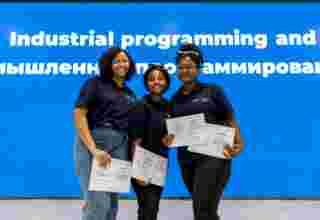
Paying close attention to the celebrated song will make your next business presentation or marketing campaign better.
When American music icon Tracy Chapman sang her classic song “Fast Car” with country star Luke Combs at the Grammy Awards recently, music lovers went wild.
Not only is the classic tune about struggle and hope absolutely beautiful, but a Black woman singing a heartfelt duet with a decades-younger star from the reddest of genres was a rare reminder of the things we all have in common.
“People across an angry and divided nation were given a magical, unifying moment,” wrote Peter Wehner in The Atlantic. “We needed it.”
All of which is true and well worth underlining. But listening to the song again, it struck me there was also a more practical lesson to be taken away from a close listen — a master class in how to captivate an audience for any kind of communicator.
Great storytelling is all about the details
You might think it’s a stretch that entrepreneurs and other business leaders have anything to learn from Chapman. But the truth is, whatever your work, if you are human, you are on some level a storyteller.
Want to convince an investor to hand over her cash? Tell a great story. Want to get the OK from the executive team for that project? Tell a great story. Want to advance your career as a thought leader? Again, get good at telling stories.
Chapman’s iconic song is a perfect example of a basic storytelling principle that can benefit business people in any one of those circumstances. Other great communicators have tried to convey the principle that makes “Fast Car” so compelling in more abstract terms.
Appearing on the podcast of Wharton professor Adam Grant, Oscar-winning actor and producer Reese Witherspoon, for instance, offered advice to business people looking to tell their own story in a captivating way. Imagine you are directing a biopic and choose what scene you would shoot “to explain how you became you,” she suggests.
Andrew Stanton, who wrote the Toy Story movies and directed Wall-E, gets at the same principle with what he calls “the unifying theory of two plus two.” He explains his theory this way: “Make the audience put things together. Don’t give them four; give them two plus two.”
These bits of advice might sound different on the surface, but they are both basically saying that rather than flat out telling the audience what to think, you should show them details and characters that lead them to draw certain conclusions by themselves. They are both more sophisticated versions of the old writing workshop standby: “Show, don’t tell.”
Great storytelling is the same no matter where you do it
Which leads me back to “Fast Car” and the lesson for entrepreneurs. Chapman’s hit song is the perfect example of this principle in action. She doesn’t sing, “My life is hard. I’m struggling. I got bad breaks.”
Instead, she paints a picture through precise, concise details. “I’ve been working at the convenience store,” or “See, my old man’s got a problem. He lives with a bottle, that’s the way it is.” Take a close look at the lyrics and you’ll see Chapman manages to tell the story of a large chunk of two lives in all of 500 words. The listener is served a few key images and allowed to fill in the blanks.
You’re unlikely to croon your way poetically through your next presentation, so what does this have to do with the rest of us? It’s true that your marketing plan or project update is unlikely to be anything near as beautiful as Chapman’s song, but you’re far more likely to get the response you want if you steal at least a dash of her approach.
Kicking off a presentation with a few well chosen anecdotes about customers’ struggles or offering a glimpse of how the world will be different with your product in it will get your audience far more engaged than a host of declarations and statistics. Why? Because these human details will trigger the in-born human hunger for story in listeners. Where are you going with this? What does it all mean? Another word for trying to put those puzzle pieces together is engagement.
Of course, you very well may need to close with metrics and bullet points. This is business, not folk music. Hard numbers matter, but so does not boring your audience silly by ignoring basic storytelling. The principle that, to grab an audience, you should choose human details and leave some space for listeners to fill in the blanks applies in the conference room as well as on the stage.







